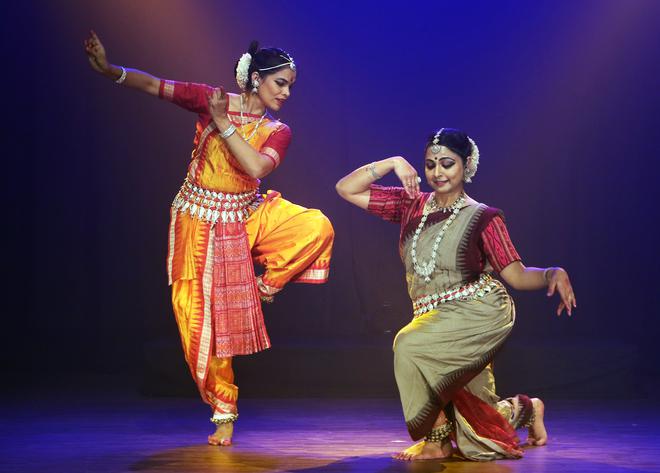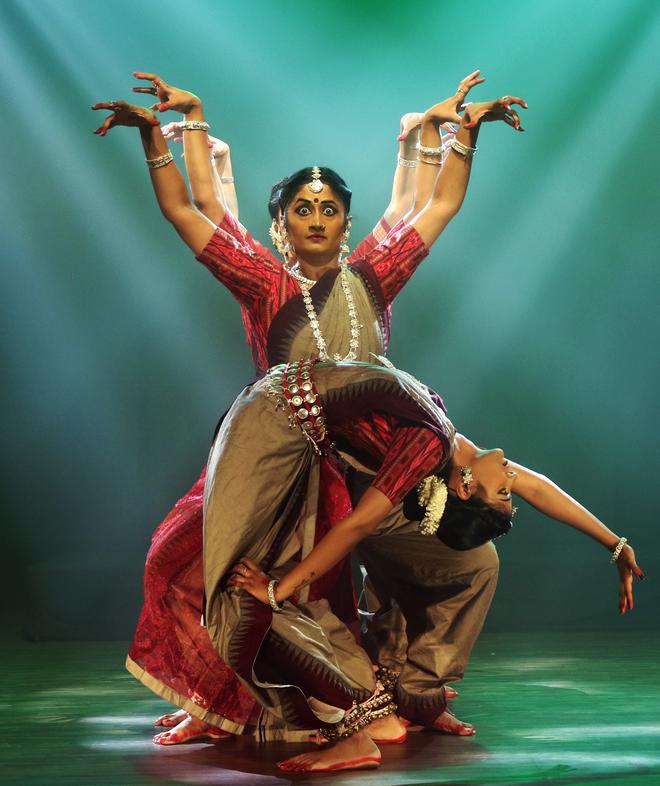The 11-day Swaralaya Soorya dance and music festival here concluded on Sunday night with an Odissi performance by Bengaluru-based Nrityantar Dance Ensemble.
Palakkad’s art aficionados who gathered at the Rapadi open air auditorium to bid farewell to the town’s favourite festival and to the year 2023 were treated to an evening of sheer artistry by danseuse Madhulita Mohapatra and troupe.
The Nrityantar ensemble began with an invocation to Jagannath of Puri, the primary deity of Odissi dance. Ms. Mohapatra’s latest choreography Colours of Krishna soon unfolded at Rapadi, leaving the crowd spellbound for about an hour.
Diverse facets of Krishna
Ms. Mohapatra and her dancers Sahana Raghavendra Maiya, Reshmi Divakaran, Debarati Datta, Nandana Sasikumar, Siri Reddy, Shikha Bacchu, Siyashree Mishra, and Angeleena Avnee showcased the diverse facets of Krishna with grace and elan.

They presented different dimensions of Krishna’s life, from his childhood antics to the saga of Kaliya Mardana. Ms. Maiya played Kaliya with agility and ferocity. Ms. Mohapatra gave a powerful visual metaphor for the triumph of good over evil when she played Krishna’s Tandava dance amidst the venomous hoods of Kaliya.
Ms. Datta and Ms. Avnee painted a heart-warming picture of the eternal love shared between Yashoda and her mischievous son, Krishna.
Eternal love
The evergreen tale of Krishna’s love for Radha was the highlight of the performance. It unfolded with a group dance to a beautiful song penned by celebrated Odia poet Kedar Mishra. The verses from the Ashtapadi, Sakhi He..., were used to show Radha poignantly expressing her eternal longing for Krishna to her Sakhi (friend and confidant).
Ms. Divakaran evoked the emotions of Radha’s eager anticipation, dejection and anger. The intelligent incorporation of another ashtapadi, Priye Charusheele..., added depth to the sequence depicting Krishna’s repentance, his pleas for forgiveness, and the subsequent reconciliation with Radha.

Ms. Mohapatra portrayed Krishna’s atonement with so much power that the audience could feel the intensity of the protagonist’s emotions. The emotions reached a zenith when Krishna bowed and pleaded Radha to place her feet on his head.
A short episode of Kamsa Vadha portrayed the dramatic demise of the tyrant king Kamsa, effectively brought forth by Ms. Datta as Kamsa.
In the final segment, the performance unfolded with Krishna assuming the role of the divine guide in the tumultuous Kurukshetra battlefield. Ms. Sasikumar portrayed Arjuna’s profound dilemma, and the performance peaked with Krishna’s proclamation Yada yada hi dharmasya... from the Bhagavad Gita. The dancers seamlessly transitioned to depict the magnificence of Lord Vishnu’s 10 incarnations.
Colours of Krishna showcased the technical brilliance of Odissi, besides a profound spiritual and philosophical message. The synergy of choreography, music and storytelling transported the audience into a mystical realm of Krishna’s divine leelas.
The music was composed by Rupak Parida and the rhythm by Guru Dhaneswar Swain.







